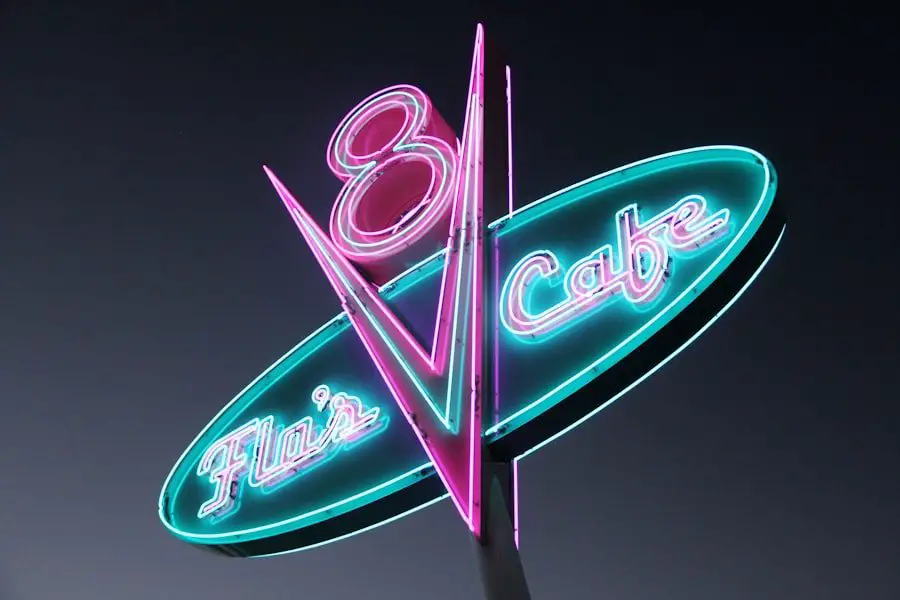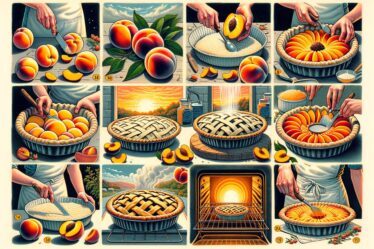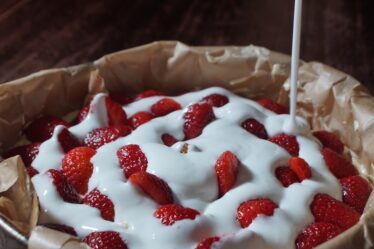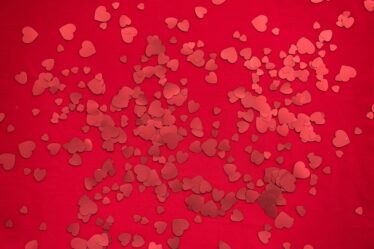
The 1980s was a decade characterized by distinctive cultural trends, fashion, and music. During this period, diners experienced a resurgence in popularity as social gathering places for diverse age groups. This renewed interest in diners can be partly attributed to a collective nostalgia for the era.
The 1980s are often associated with a perception of simpler times, and diners served as venues where people could congregate, enjoy comfort food, and socialize. The typical retro aesthetic of these establishments, featuring elements such as neon lighting, jukeboxes, and checkered flooring, evokes memories of this past era. In recent years, the popularity of 1980s-themed diners has continued to increase as individuals seek experiences that remind them of a period perceived as less complex.
The appeal of 1980s-style diners lies in their ability to create an immersive environment reminiscent of the decade. The 1980s were known for vibrant colors, distinctive hairstyles, and memorable pop culture phenomena. For many patrons, visiting these establishments offers an opportunity to relive youthful memories or experience a time they may not have personally encountered.
The retro decor, often including vintage posters, neon signage, and vinyl seating, contributes to this immersive experience. The rise of 1980s-themed diners may also be linked to a desire for authenticity in an increasingly digital and fast-paced world. In a time of constant change, the familiarity and comfort associated with these diners can provide a form of escapism for some individuals.
Key Takeaways
- 80s diners are experiencing a resurgence due to the nostalgia for the era and its cultural significance.
- The appeal of 80s diners lies in their retro aesthetic, classic diner fare, and the sense of community and connection they offer.
- Chefs are updating classic diner fare with modern twists to cater to contemporary tastes while still maintaining the nostalgic charm.
- The design trends in 80s diners include neon lights, vinyl booths, and vintage decor that transport patrons back in time.
- 80s diners play a role in bringing people together and fostering a sense of community, making them more than just a place to eat.
- Social media is playing a significant role in reviving the trend of 80s diners, with users sharing their experiences and memories online.
- The future of 80s diners looks promising, as the trend continues to evolve and adapt to modern preferences while preserving its nostalgic appeal.
The Allure of 80s Diners: What Makes Them So Appealing
Retro Ambiance and Nostalgic Flavors
The allure of 80s diners lies in their ability to offer a unique and nostalgic experience that is hard to find elsewhere. The retro decor, complete with neon lights, vintage signage, and classic jukeboxes, creates an atmosphere that is both fun and inviting. The menu at 80s diners often features classic comfort foods such as burgers, milkshakes, and fries, which evoke a sense of nostalgia for simpler times.
A Gathering Place for the Community
In an age where so much social interaction takes place online, diners provide a physical space for people to come together and connect face-to-face. The sense of community and camaraderie that can be found in 80s diners is a major draw for many patrons. Whether it’s the regulars who gather at the counter for their morning coffee or the families who come in for a weekend brunch, 80s diners have a way of bringing people together in a warm and welcoming environment.
A Laid-Back and Casual Atmosphere
Additionally, the laid-back and casual atmosphere of 80s diners makes them an appealing destination for people of all ages. Whether it’s a group of friends looking for a fun night out or a family seeking a relaxed meal, 80s diners offer something for everyone.
Modern Twists on Classic Diner Fare: How Chefs are Updating the Menu

While 80s diners are known for their classic comfort foods, chefs are finding ways to put a modern twist on these beloved dishes. One way that chefs are updating the menu at 80s diners is by incorporating fresh and locally sourced ingredients. By using high-quality produce and meats, chefs are able to elevate classic diner fare and appeal to a more health-conscious clientele.
Additionally, many 80s diners are offering vegetarian and vegan options to cater to the growing demand for plant-based dining choices. This modern approach to classic diner fare allows chefs to appeal to a wider audience while still maintaining the nostalgic appeal of the menu. Another way that chefs are updating the menu at 80s diners is by experimenting with fusion cuisine.
By incorporating global flavors and cooking techniques into traditional diner dishes, chefs are able to create exciting and innovative menu items that appeal to adventurous eaters. For example, classic burgers may be topped with Korean barbecue sauce or Mexican street corn may be served as a side dish. These creative twists on classic diner fare add an element of excitement to the menu while still paying homage to the nostalgic roots of 80s diners.
By embracing modern culinary trends while staying true to their retro roots, chefs are able to keep 80s diners relevant and appealing to a new generation of diners.
The Retro Aesthetic: Design Trends in 80s Diners
| Design Element | Description |
|---|---|
| Neon Lights | Bright, colorful neon lights used for signage and decoration. |
| Checkerboard Patterns | Black and white checkerboard patterns on floors and tabletops. |
| Vinyl Seating | Booths and chairs upholstered in colorful vinyl. |
| Retro Artwork | Artwork featuring 80s themes such as arcade games and pop culture icons. |
| Jukebox | A classic jukebox for playing music from the 80s era. |
The retro aesthetic of 80s diners is a major part of their appeal, and designers are finding new ways to incorporate this nostalgic style into modern spaces. One design trend that is popular in 80s diners is the use of bold colors and patterns. From bright neon signs to vibrant vinyl booths, the use of bold colors creates a fun and lively atmosphere that harkens back to the 1980s.
Additionally, designers are incorporating retro-inspired artwork and decor elements such as vintage posters and classic movie memorabilia to add to the nostalgic ambiance. Another design trend in 80s diners is the use of vintage furniture and fixtures. Many diners feature retro furniture such as chrome bar stools, Formica tables, and vinyl booths that evoke the classic diner experience.
Additionally, designers are incorporating vintage lighting fixtures such as neon signs and classic jukeboxes to add to the retro aesthetic. By embracing these design trends, 80s diners are able to create an immersive experience that transports patrons back in time while still feeling fresh and relevant.
Community and Connection: The Role of 80s Diners in Bringing People Together
One of the key roles that 80s diners play in their communities is bringing people together in a warm and welcoming environment. Whether it’s the regulars who gather at the counter for their morning coffee or families who come in for a weekend brunch, 80s diners have a way of fostering connections between people from all walks of life. The casual and laid-back atmosphere of diners makes them an ideal place for people to gather and socialize without feeling rushed or pressured.
This sense of community is something that is increasingly rare in today’s fast-paced world, making 80s diners all the more valuable as gathering places. In addition to providing a physical space for people to connect, 80s diners also play a role in preserving local history and culture. Many diners have been around for decades and have become beloved institutions in their communities.
By providing a place for people to come together and share meals, memories, and conversations, 80s diners help to create a sense of belonging and continuity in their neighborhoods. Whether it’s through hosting community events or simply providing a welcoming space for patrons to gather, 80s diners play an important role in fostering connections and preserving local traditions.
80s Diners in the Digital Age: How Social Media is Helping to Revive the Trend

Showcasing Retro Aesthetic and Classic Menu Items
Platforms such as Instagram and Facebook have allowed diners to showcase their retro aesthetic and classic menu items to a wide audience. By sharing visually appealing photos and engaging content, diners are able to attract new patrons who are seeking out unique dining experiences.
Connecting with Communities and Tapping into Nostalgia
Additionally, social media has allowed diners to connect with their communities in new ways by promoting events, specials, and other happenings at their establishments. Social media has also allowed diners to tap into the nostalgia trend by connecting with patrons who have fond memories of the 1980s. By sharing throwback photos, vintage advertisements, and other nostalgic content, diners are able to create an emotional connection with their audience.
Leveraging Social Media for Storytelling and Community Engagement
This sense of nostalgia can be a powerful draw for patrons who are seeking out experiences that transport them back in time. By leveraging social media as a tool for storytelling and community engagement, 80s diners are able to stay relevant and appeal to new generations of diners.
The Future of 80s Diners: What’s Next for this Nostalgic Trend
As the trend of 80s diners continues to grow in popularity, it’s clear that these nostalgic establishments have a bright future ahead. One potential direction for the future of 80s diners is an increased focus on sustainability and ethical sourcing. As consumers become more conscious of where their food comes from, diners may begin to prioritize locally sourced ingredients and eco-friendly practices.
This modern approach to classic diner fare will allow these establishments to appeal to a new generation of socially conscious consumers while still maintaining their nostalgic appeal. Another potential future trend for 80s diners is an increased emphasis on experiential dining. As consumers seek out unique and memorable dining experiences, diners may begin to offer themed events, live entertainment, or interactive dining experiences that go beyond just serving food.
By creating immersive experiences that transport patrons back in time or offer something truly unique, 80s diners can continue to attract new audiences while staying true to their nostalgic roots. Overall, the future looks bright for 80s diners as they continue to evolve and adapt while maintaining their timeless appeal.
If you’re a fan of 80s diners, you’ll love this article on flavorfulsips.com about the joys of Casaba melon. This unique and delicious fruit was a popular ingredient in many dishes served at diners during the 80s, and this article provides a comprehensive guide on how to enjoy it in various recipes. Check it out here!
FAQs
What were 80s diners like?
80s diners were known for their retro decor, jukeboxes, and classic American comfort food. They often had a nostalgic feel, with neon signs, checkered floors, and vinyl booths.
What type of food was served at 80s diners?
80s diners typically served classic American fare such as burgers, fries, milkshakes, and homemade pies. They also offered a variety of breakfast items like pancakes, waffles, and omelets.
Did 80s diners have a specific atmosphere?
Yes, 80s diners were known for their lively and casual atmosphere. They often played 80s music and had friendly, attentive staff. Many diners also had a retro theme, with memorabilia from the 1950s and 1960s.
Were 80s diners popular?
Yes, 80s diners were very popular during their time. They were a popular hangout spot for people of all ages, and were often featured in movies and TV shows as iconic American settings.
Are there still 80s diners around today?
Yes, there are still many 80s diners around today that have preserved the retro atmosphere and classic menu items. Some have even become tourist attractions for those seeking a nostalgic dining experience.



